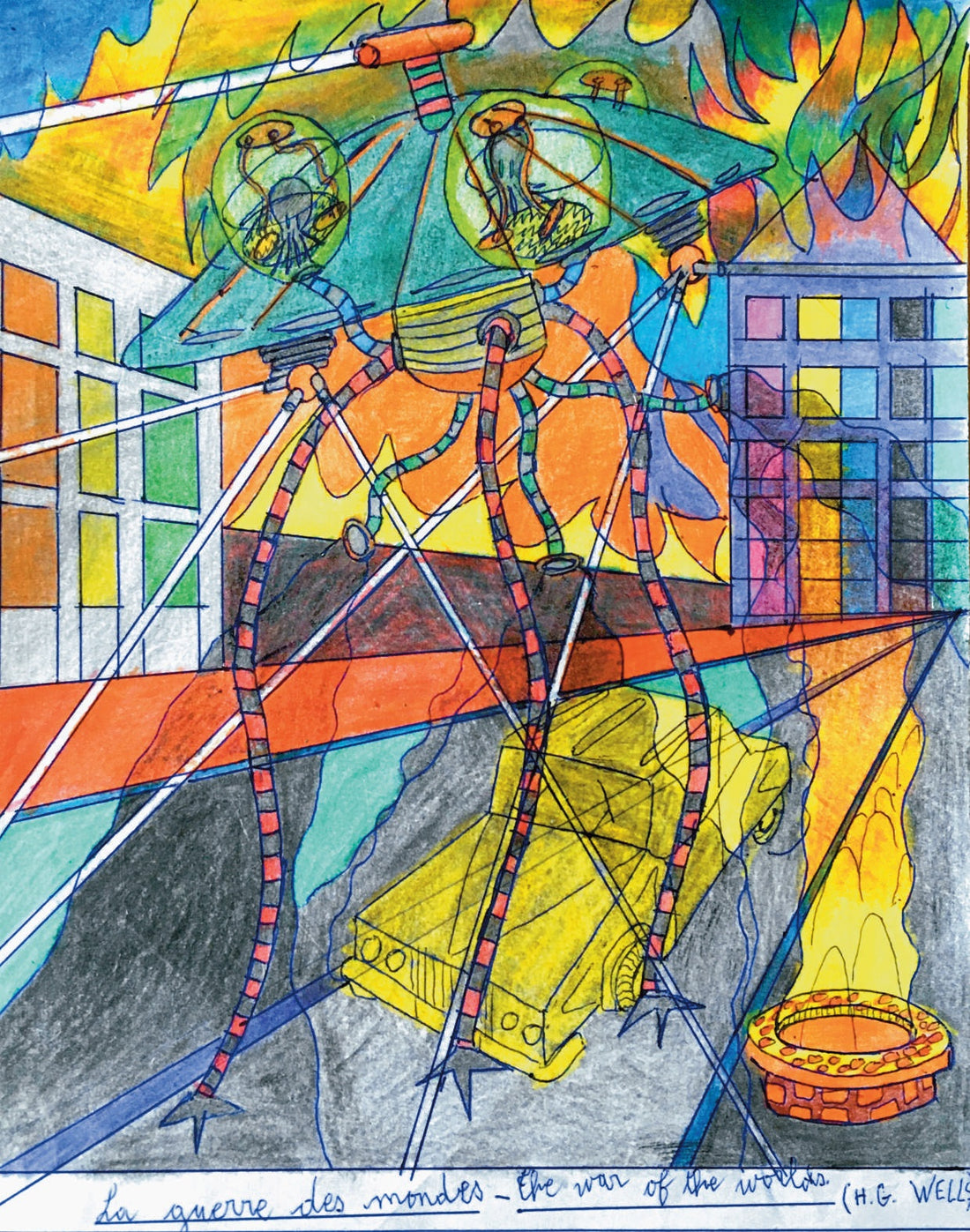First published: Spring 2024
Daniel Lehoux hardly drew for 50 years but now he is once again making artwork inspired by his boyhood obsession with classic sci-fi literature
Daniel Lehoux is passionate about classic science fiction that addresses themes of utopia and dystopia. He is also fascinated by the evolution of technology and futuristic scientific developments that may appear in a time or place more or less distant or parallel to our own. He was born in the Moroccan city of Meknes in 1952, where his French father, a career military man, had been assigned. The family returned to France at the end of the 1950s, settling in Lavaur in the southwest.

Un Défilé de Robots (A Line of Robots), 2023, 8.5 x 11.5 in. / 21 x 29.5 cm
all artworks shown: ballpoint pen and coloured pencil on paper;
courtesy: Michel Lehoux
A timid child, Lehoux enjoyed reading and drawing. From a very young age, he was interested in sci-fi literature and the associated technology, and his very first sketches reflected the imagery and imaginary representations that he absorbed or conjured up from his readings. The names on Lehoux’s book list included iconic
pioneering authors such as Jules Verne (20,000 Leagues Under the Sea, Robur the Conqueror), HG Wells (War of the Worlds), or later Aldous Huxley (Brave New World) and those of the golden age of science fiction of the 1940s and 1950s, such as Isaac Asimov, HP Lovecraft and Fredric Brown. Lehoux also read the authors of the 1960s and 1970s who introduced a critical regard of society in their novels, including René Barjavel (The Ice People), Franck Herbert (Dune), and Cordwainer Smith (The Rediscovery of Man). More inspiration came from comic
strips such as “Mandrake the Magician,” “Flash Gordon” and “Silver Surfer”, as well as French magazines Pilote and Métal Hurlant, and early television series like The Prisoner.

Une Cité Envahie (An Invaded City), 2023, 12 x 8.5 in. / 29.5 x 21 cm
All of these viewed and dreamed images, most gleaned from resources that he purchased at a Lavaur bookshop, became a collection of reference material that would then come to comprise the body of Lehoux’s own creative output, as he added to and deepened his own innate, undeniable graphic ability.

Untitled, 2022, 8.5 x 9.5 in. / 21 x 24.5 cm
When he reached puberty, Lehoux’s behaviour led to him receiving a diagnosis of psychotic disorders. He stuck with regular education until 1965, taking cultural and historical studies, but, finding it too difficult, switched to a more technical educational path. However, his psychosis became increasingly challenging and by 1970 he had dropped all studies and succumbed to repeated hospitalisations. These hospital stays – along with the prescribed drugs and various treatments he underwent – diminished Lehoux’s ability to concentrate on reading, as well as reducing his artistic interest and capabilities.
By HERVÉ COUTON
This is an article extract; read the full article in Raw Vision #118.




